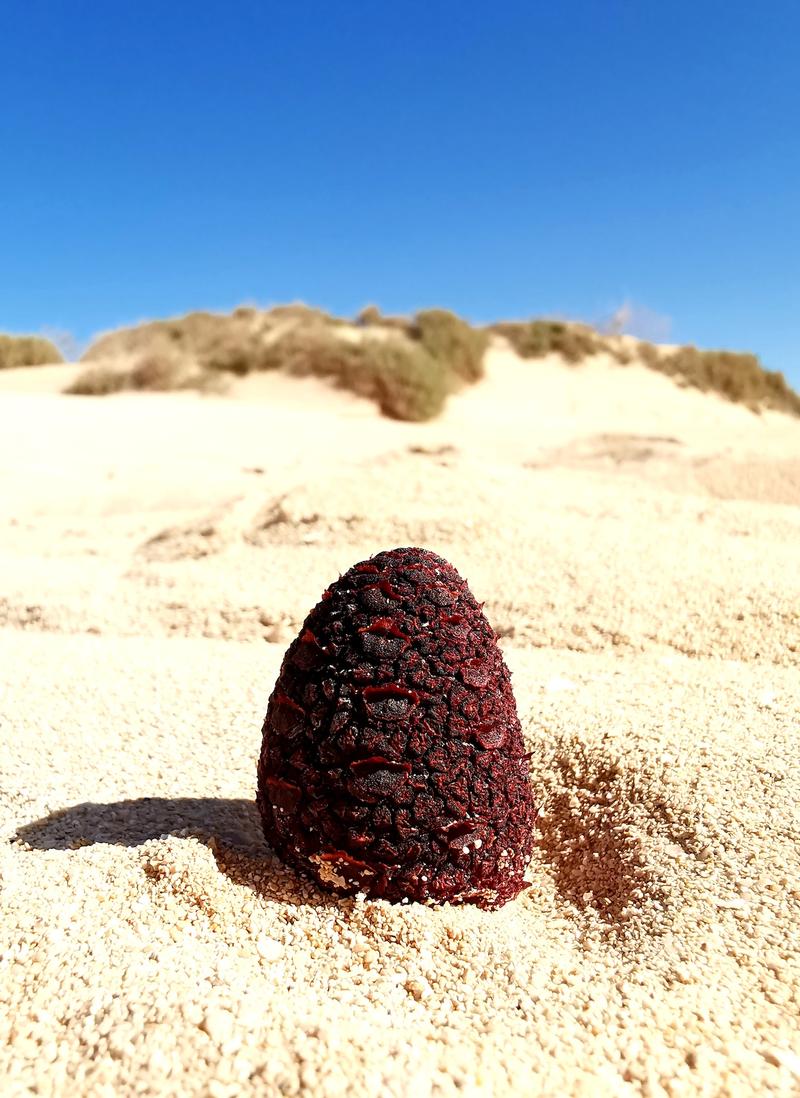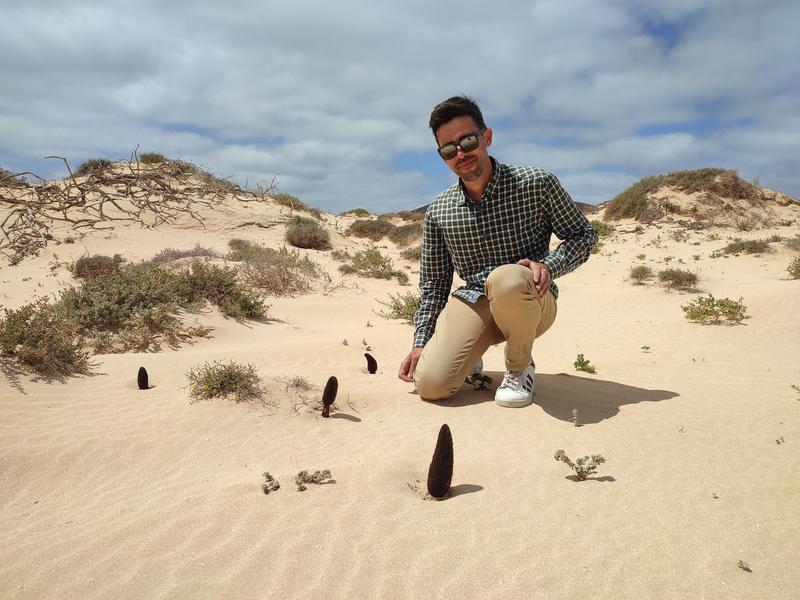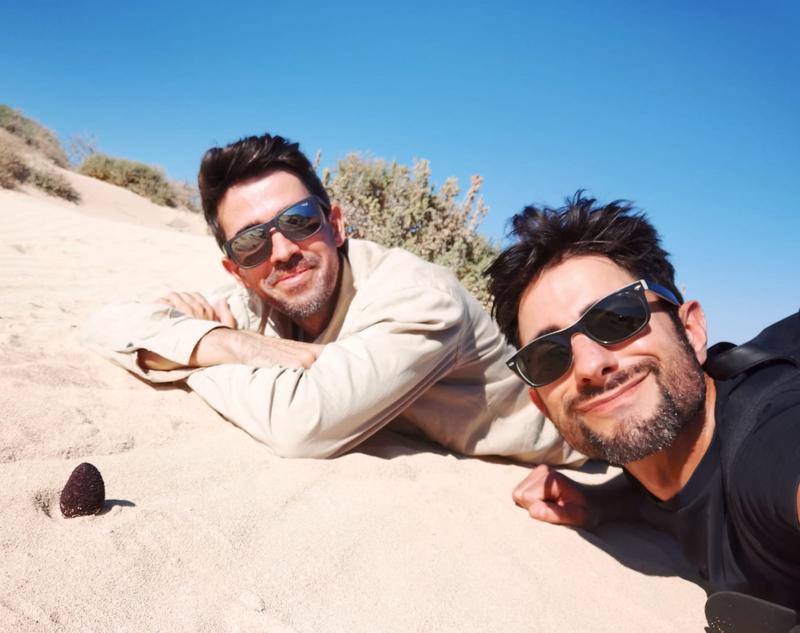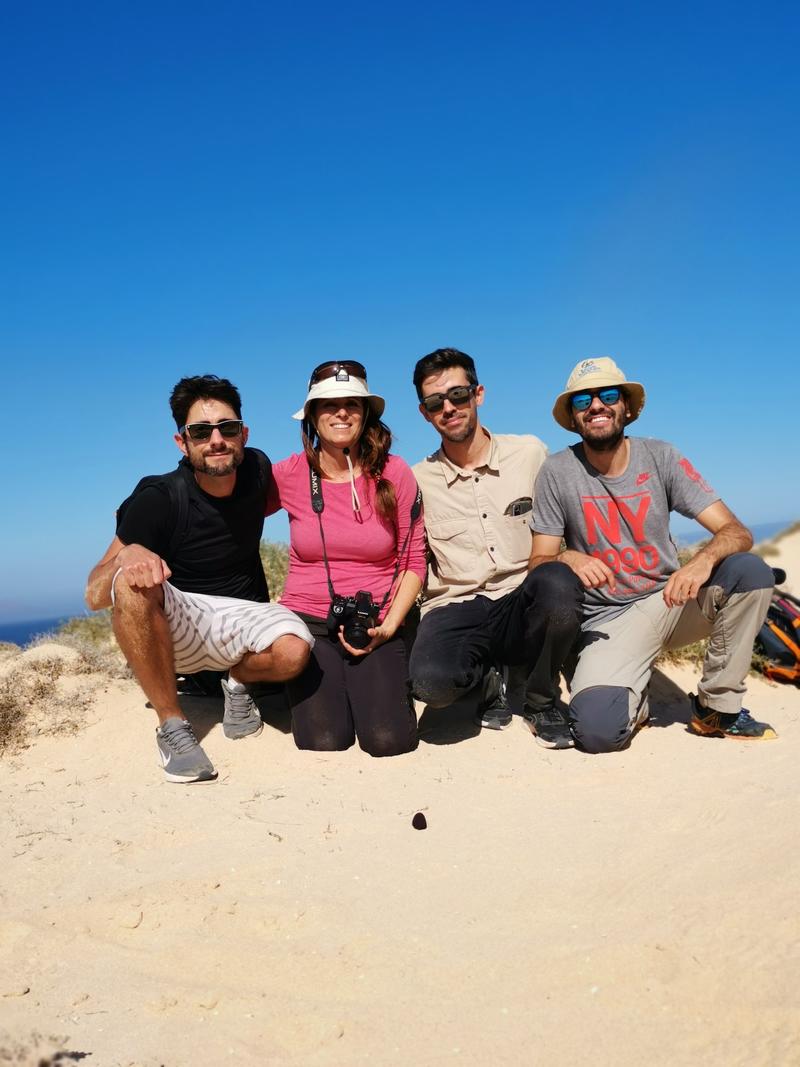Seeds of Hope for a Plant in Peril
Conservation of Cynomorium in the Canary Islands

Curiously Beautiful
Curiously beautiful and highly elusive, parasitic plants are some of the plant kingdom’s greatest enigmas. These plants have often been neglected from conservation strategies worldwide because they’re perceived to be difficult or even impossible to cultivate. Indeed, at least 76 % of the c. 4,700 known species of parasitic plant have never been grown; many are also under severe threat in the wild. Scientists and conservationists need to work together to protect them.

Cynomorium coccineum is a plant like no other. It produces black, leafless sprouts jammed with tiny flowers, that jut out of the sand. The plant is parasitic (though harmless), on the roots of shrubs and small trees in dunes and other arid places, for example on mastic and myrtle in Africa, and on obione (Halimione portulacoides) and saltworts (Salsola spp.) on coastal sands and cliffs across the Mediterranean. For most of its life it exists hidden underground as a system of snake-like roots, and emerges only to flower. It is rarely seen.
Its range stretches from the Canary Islands (La Graciosa) in the west, to Mauritania and Mongolia in the east (where populations are sometimes referred to as a separate species). Although geographically widespread, at a local scale, populations are often rare or endangered without conservation efforts in place. Moreover Cynomorium is harvested and traded illegally across much of its range for herbal medicine. In the Canary Islands the plant has suffered a significant historic decline, and now just one population remains on the island of La Graciosa. Without intervention, the species is threatened with extinction in its westernmost global location.
Matías Hernandez Gonzalez (ecologist in the Canary Islands) and Chris Thorogood (botanist at the University of Oxford Botanic Garden) have established a project to safeguard the precarious existence of Cynomorium in the Canary Islands, extending the work of a campaign led by Oxford Botanic Garden to conserve parasitic plants around the world. Matías’s and Chris’s aim is to successfully propagate Cynomorium from the single extant population and reintroduce the plant to a new location on the island of La Graciosa, doubling its footprint.
In 2021, Matías and Chris joined local ecologists Mónica and Jose Manuel to visit the Cynomorium population in La Graciosa. In this guest post for OBGA, Matías shares what has happened since.
Establishment of the Conservation Project
By Matías Hernandez Gonzalez
In the winter of 2021, Chris told me about Cynomorium coccineum, a rare and curious plant found in the Canary Islands. The plant was once more widespread in the Canary Islands, but according to recent records, it has dwindled to just one population on the small island of La Graciosa. We made plans to visit the only known location in December that year with a group of local ecologists. We were excited about the possibility of finding something so rare and unusual.

After a boat ride and half a day’s trek under the searing sun, we were rewarded with several sprouts of Cynomorium forcing their way out of the powdery white sand. The plant wasn’t conventionally beautiful, but we knew it was special. Considering its rarity and concerning decline, we devised a plan to conserve it. After receiving written permission to collect seed, our first attempt during the spring of 2022 was unsuccessful; the plants had already bolted and dispersed their seeds. We had no choice but to postpone seed collection to the following year.
In February 2023, I returned to the site and I managed to collect seeds from the shrubs it was parasitising (its so-called hosts): Salsola vermiculata and S. divaricata; but alas, Cynomorium was still unripe. It seems there is a short window for seed collection. Eventually, in March 2023, I was able to collect seeds from Cynomorium. And so began our conservation trial.
Back on the island of Lanzarote, we carefully planted the seeds under glass. Working with Ayuntamiento de Tías - PFAE Tías en Verde, in Tegoyo, Lanzarote – who kindly provided the greenhouse space – we sowed two trays of sand with seeds from the host shrubs. Once the host plants have developed into shrubs a few inches high, we will inoculate their growing roots with Cynomorium seed. Cynomorium has never been grown in this way before. We unsure how long the plants will take to establish, but once they’re ready, we will return them to the island of La Graciosa. With time, care, and a little luck, we will be able to double the distribution of Cynomorium in the Canary Islands.
The glasshouses of Tegoyo are a space for learning; our hope is that this trial will form part of a training opportunity for the propagation of rare native plants more broadly. Once the inoculated shrubs are ready for transporting, there will be the opportunity to engage students from the La Graciosa Educational Center to assist in establishing the new plants on the island. We also plan to present this work at local events on biodiversity hosted by the Cabildo de Lanzarote and La Graciosa, and via written interpretation boards for visitors to the site.
Ultimately, we hope others will be inspired by our efforts to propagate and protect rare and unusual plants like Cynomorium that are in decline and in urgent need of concerted conservation effort.

Acknowledgements
- Ayuntamiento de Tías - PFAE Tías en Verde, Isla de Lanzarote, for their collaboration providing space in their greenhouse and irrigation for the trial;
- Cabildo de Lanzarote y La Graciosa and Centro Isla de La Graciosa, Organismo Autónomo de Parques Nacionales, Ministerio para la Transición Ecológica y el Reto Demográfico, for their authorisation to collect seeds and sand from La Graciosa for the trial.
Further reading
Plants of the World Online, Kew: ‘Cynomorium coccineum L’.
University of Oxford Botanic Garden and Arboretum
Twitter: @OBGHA | Facebook: @OxfordBGA | Instagram: oxfordbga



